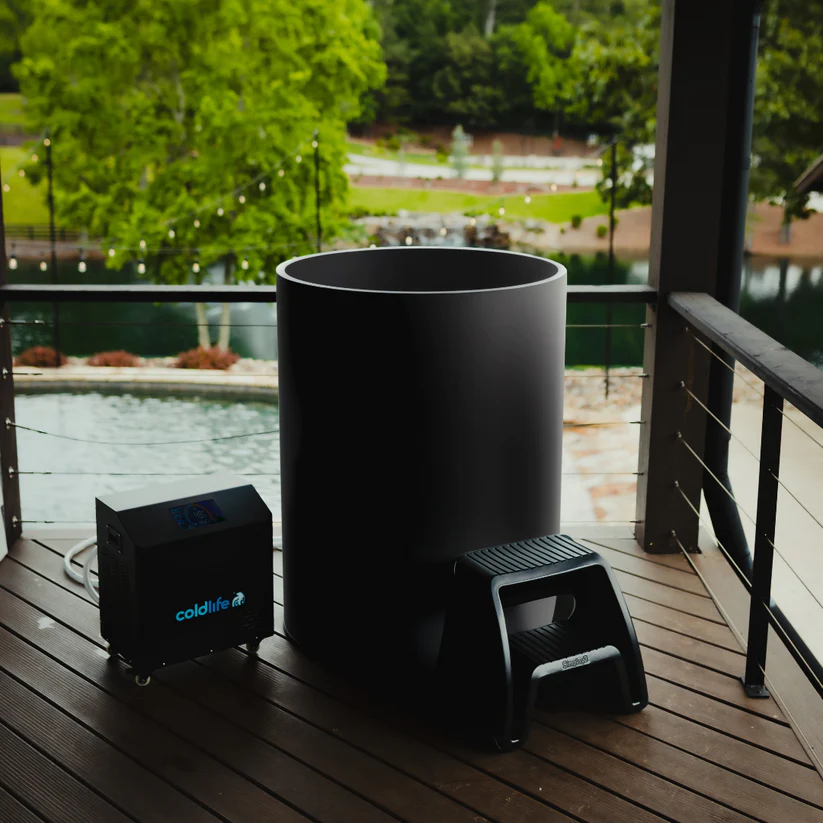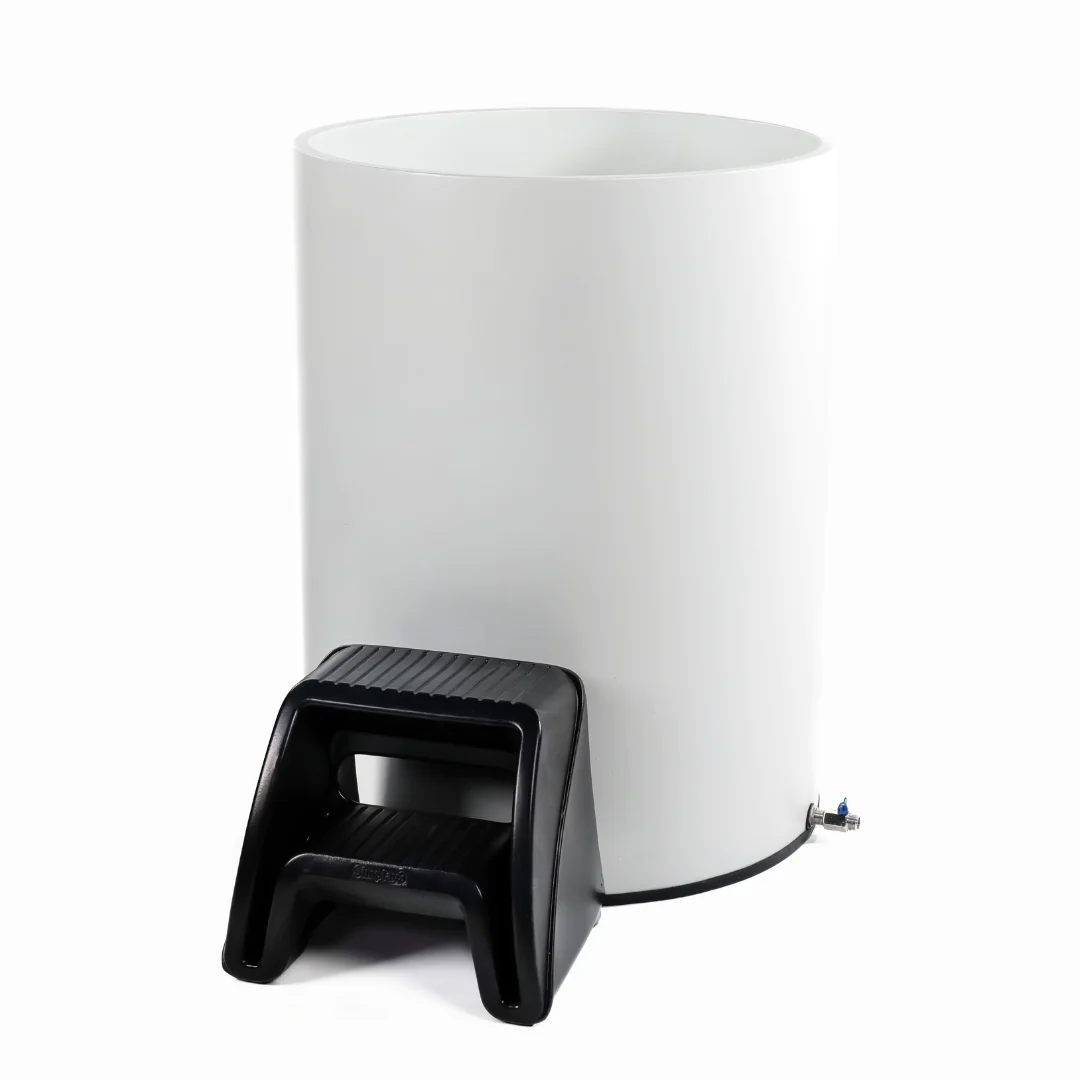Key Takeaways – What is too cold for a cold plunge
Takeaways
– **Start with temperatures below 60 degrees Fahrenheit**: For beginners, it’s best to dip your toes into the cold plunge experience with water between 50-59 degrees Fahrenheit. Gradually work your way down to colder temperatures as you become more comfortable. – **Consistency is key**: To reap the full benefits of cold plunging, make sure to incorporate it regularly into your routine. The more you expose yourself to this therapy, the greater the potential for positive effects on your body. – **Consult a healthcare professional**: Before diving headfirst into cold plunge therapy, speak with a medical professional. They can provide guidance on whether this treatment is suitable for you based on your individual health needs and conditions.Our #1 Best Recommended Cold Plunge
Take a look at the ColdLife Plunge 1 for a unique cooling experience. If you are looking for more, we also offer a bundle. Check out the Cold Life Plunge Bundle to enjoy multiple products at once!Are you ready to redefine your limits with cold immersion?
Explore the compelling truth behind cold plunging and its remarkable benefits for mind and body.
Dive into the Cold Life Plunge Bundle now to embark on your journey to revitalization and strength. Transform your life today!
Here’s a Youtube Video about What is too cold for a cold plunge
When discussing the optimal temperature for a cold plunge, it’s important to understand that “too cold” can be relative and dependent on individual tolerance. However, typically, 10-15°C (50-59°F) is considered safe and beneficial.
To safely experience the benefits of a cold plunge, it’s crucial to acclimate your body starting from temperatures of around 20°C (68°F) and gradually decreasing. Many experts warn against sudden exposure to extreme cold temperatures as it could lead to hypothermia or cardiovascular issues.
The key takeaway? Cold plunges should be chilling but not dangerous; listen to your body’s signals and remember that safety should always come first.

Understanding the Basics of Cold Plunge Therapy
The world of wellness has a rather refreshing tool to offer — cold plunge therapy. Perhaps you’ve heard about it, or maybe you’re curious and asking, “What is too cold for a cold plunge?“ In essence, this therapy is centered on full immersion in cold water that ranges from 38 to 60 degrees Fahrenheit. It’s a practice with roots in ancient civilizations and its resurgence today stems from its variety of potential health benefits.Exploring the Potential Health Benefits of Cold Plunging
Cold plunges aren’t just about braving icy temperatures. They come packed with numerous potential health benefits such as reducing inflammation, boosting mood and focus, enhancing recovery after physical activities, and soothing sore muscles.You see, chronic inflammation can lead to an array of health issues over time while improved mood and focus contribute positively to mental wellbeing. The benefits of cold plunges also encompass improving muscle recovery — a boon for fitness enthusiasts.

Download this courtesy guide to optimize your sauna and cold plunge experience and health optimization.
Download the Free Guide TodayDeciphering Preferred Temperatures and Duration for Cold Plunges
The question “What is too cold for a cold plunge?” often comes up. The answer lies within individual preferences but starting below 60 degrees Fahrenheit is generally recommended for beginners who can then decrease the temperature gradually as comfort increases.Expert opinions suggest staying submerged in water between 45 and 55 degrees Fahrenheit for approximately three to five minutes.
Highlighting the Ideal Therapeutic Temperatures for Cold Plunge Therapy
The ideal temperature for therapeutic benefits is considered to be below 60 degrees Fahrenheit or 15 degrees Celsius. For those new to cold water therapy, starting your journey at temperatures between 50 and 59 degrees Fahrenheit is advised. From there, you can slowly acclimate your body to colder climates.In any case, always listen to your body and adjust the ice bath temperature accordingly.
Considering Health Precautions and Risks of Cold Plunge Therapy
While this practice has its advantages, health risks of too cold water immersion should not be brushed under the carpet. Those with pre-existing conditions like a flu or cold are often advised against cold water plunges. The reason? Such a plunge could potentially weaken an already strained immune system.All things considered, it’s important to remember that hypothermia risk is real when dealing with extremely low temperatures.
Seeking Professional Advice Before Starting a Cold Plunge Regimen
As with any new therapeutic regimen, it’s advisable to consult with a healthcare professional before diving into the world of cold plunges. They can provide valuable advice regarding cold plunge pool guidelines and optimum temperature for ice bath therapy based on your specific health requirements.
When it comes to taking a cold plunge, there are several important factors to consider. One of the most crucial aspects is understanding what temperature does a cold plunge need to be. This will help you adjust your experience and ensure that it’s not too cold for your body to handle. Then come the questions related to timing. Knowing how long can you stay in a cold plunge is essential because staying too long could lead to hypothermia. Similarly, knowing how long is a cold plunge will help in effectively managing your time. For those who prefer showers or don’t have access to a cold plunge, it may be beneficial to learn whether can a cold shower be a cold plunge. This could provide an effective alternative for days when you are unable or unwilling to use the actual facility. Understanding the mechanism behind how these tubs function can also enhance your overall experience. For instance, one might wonder about what chiller does the cold plunge use. Having this knowledge allows you to make any necessary adjustments and guarantees that your system works effectively. Remember, the ultimate goal of using these facilities is not just about withstanding intense temperatures but also enhancing your health and wellness routine.
My Personal Take about What is too cold for a cold plunge
Hey there, friend!
Ever find yourself pondering over the question, “What is too cold for a cold plunge?” when considering ice bath therapy? With my expert knowledge in this area, I can help you understand the fascinating world of saunas and cold plunges.
You see,I’ve dedicated my life to understanding the science and health benefits behind them.
As daunting as it may seem to take a dip into icy water, know that there’s a threshold; and yes, there is such a thing as too cold! Some important factors include the temperature of your ice bath (brr!), your personal tolerance level, and the duration of your plunge.
In any case,”No pain, no gain”, right?
Saunas and Cold plunges are not only about enduring extreme temperatures. They’re about pushing your limits while also listening to your body. If diving into an ice-cold plunge after a sauna session sounds exciting or maybe just plain crazy – I say give it a whirl! By safely testing these thresholds and paying attention to how you feel during and after each session, you might just unlock new levels of wellness—and even fun—that you never imagined possible!
Our #1 Best Recommended Cold Plunge for most People
Understanding the lower limits to ice bath therapy is crucial for safe and effective cold plunges. When choosing your plunge pool, consider the ColdLife Plunge 1, designed to offer maximum benefits. If you’re looking for multiple products, the ColdLife Plunge Bundle could be a suitable comprehensive solution.Discover the unparalleled benefits of cold immersion with ColdLife Plunge 1. Unleash your full potential with our innovative cold plunging solution. Explore the transformative effects on your body and mind. Elevate your lifestyle with ColdLife Plunge 1 today!
Frequently Asked Questions about What is too cold for a cold plunge
Can you cold plunge if you have a cold or the flu?
While cold plunge therapy can have many benefits, it is not recommended if you are currently dealing with a cold or the flu. Plunging in cold water when already ill may weaken your immune system further, delaying your recovery.
What is the ideal temperature for a cold plunge?
The ideal temperature for a therapeutic cold plunge is below 60 degrees Fahrenheit or 15 degrees Celsius. Starting with water temperatures around 50-59 degrees Fahrenheit is recommended for beginners, gradually acclimating to colder temperatures over time.
How long should I stay in a cold plunge?
Experts suggest staying in the water between 45 and 55 degrees Fahrenheit for about three to five minutes. Consistency is key with cold plunging — regular exposure can potentially amplify the benefits of this therapy.
What are the potential benefits of cold plunge therapy?
Cold plunges can ease sore muscles, reduce inflammation, boost mood and focus, and improve recovery. Regular exposure to cold water can enhance these benefits over time.
Can I adjust the temperature of my cold plunge based on personal preference?
Yes! The temperatures for these plunges vary depending on individual preference. Most participants report using water temperatures ranging from 38 to 60 degrees Fahrenheit.
Should I consult with a healthcare professional before starting cold plunge therapy?
Absolutely! It’s always best to consult with a healthcare professional before beginning any new therapeutic regimen such as cold plunge therapy. They can provide guidance specific to your health needs and ensure your safety throughout the process.
Now you know What is too cold for a cold plunge , but that’s only the beginning of your journey here at Sweat N Chill Zone. If you found this post useful there’s more to learn to get you to the next step of your sauna & cold plunge journey. If you read our next articles you’ll be a step further than most people.
Before you go…
Takeaways
– **Start with temperatures below 60 degrees Fahrenheit**: For beginners, it’s best to dip your toes into the cold plunge experience with water between 50-59 degrees Fahrenheit. Gradually work your way down to colder temperatures as you become more comfortable. – **Consistency is key**: To reap the full benefits of cold plunging, make sure to incorporate it regularly into your routine. The more you expose yourself to this therapy, the greater the potential for positive effects on your body. – **Consult a healthcare professional**: Before diving headfirst into cold plunge therapy, speak with a medical professional. They can provide guidance on whether this treatment is suitable for you based on your individual health needs and conditions. Discover the immense health benefits and the transformative power of cold plunging by visiting our page on What is a Cold Plunge Transformation. To prepare for your first experience, learn more about the Best Cold Plunge Temperature and the Best Way to Start Cold Plunging, familiarize yourself with different methods on our page about the Best Ways to Cold Plunge, and understand how it helps fight off harmful free radicals by checking out our article on Cold Plunging and Free Radicals.George From Sweat N Chill Zone
George, the passionate founder of Sweat N Chill Zone, is an ardent advocate for holistic wellness through the healing powers of saunas and cold plunges. With a background in health sciences and a fervent dedication to sharing the benefits of thermal therapy, George curates an informative space, offering insights, tips, and expert advice to help individuals optimize their health and well-being through the transformative effects of heat and cold treatments. Through Sweat N Chill Zone, George aims to inspire and educate, fostering a community centered around rejuvenation and vitality.
Download this courtesy guide to optimize your sauna and cold plunge experience and health optimization.
Download the Free Guide Today



